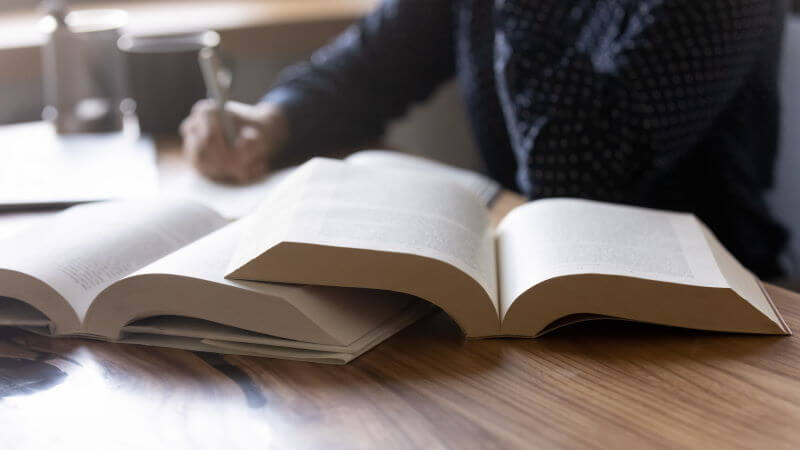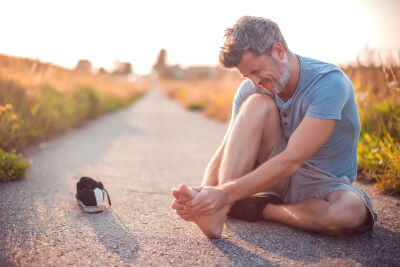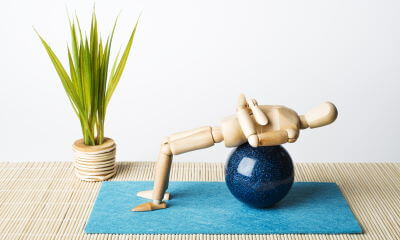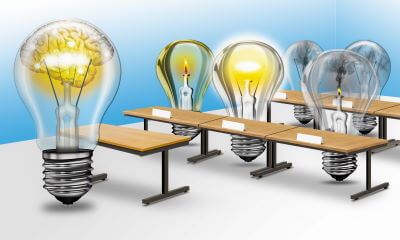Theoretical foundations
All theoretical foundations of causal therapy of the postural and musculoskeletal system are known in medicine and generally accessible. First, we give here a general presentation of the basics. Later, these will be described separately for doctors in this field and for medium-sized medical staff with a theory of motion (physiotherapists and physical therapy instructors) and without a theory of motion (masseurs).

1. Introduction
I have not invented anything new, I have only linked the existing knowledge in medicine differently. I have tried to economize my work as a physiotherapist and treat patients more effectively, and this with simple means. I as a physiotherapist have my hands, I still have an electric apparatus, a couch. I have to live with this and work as effectively as possible. So the most important thing is the results of the examination, the diagnosis.
When a patient comes to me, I always ask myself first: what is the motive of nature that the body has to defend itself in this way and react just like this? Then I worked out a therapy for a specific syndrome. The most important thing is to recognize that the location of complaints often does not explain the cause.
Quite typical – the mouse arm. It hurts in the arm or upper back, it is treated there, but the cause is the wrist. Or for example, often you have discomfort in the lower back: you give massage, manual therapy, physiotherapy. Who thinks about the foot? The patient goes home healthy. Allegedly. But after a quarter of a year, he comes back. For example, the shoulder hurts, so the doctor writes down something for the shoulder. Family doctors, general practitioners in Germany have 15 hours of physiotherapy in their training. Often they don’t see the cause-and-effect (causal) connection.
If you know this connection and have a certain weapon for a certain symptom, and if you work through everything in the right order, then you need much fewer treatments and the therapy becomes noticeably more and more effective. Today, I treat up to 60 patients a day. But what I do also has a lot to do with experience.
So, I have different methods for diagnosis and therapy, and I have a different approach to how I approach illness or, better yet, the problem. The most important thing is to recognize how the problem arose.
I have looked after handball players as a masseur and have seen how the injury happened. So I was able to develop a plan for the therapy relatively quickly. Now someone comes into my office with an injury, and suddenly I needed much more time for the treatment of the shoulder. Because I didn’t see how it happened. That’s why I’ve made it a habit to ask questions first to find out how it all happened. How did the violence get on the body? One of the first questions I always ask the patient is what he is employed as.
An example: car accident. Trauma to the cervical spine. Where were you sitting in the car? On the driver’s side or the passenger side? Where was the seat belt? Did the blow come from behind you, from the side, or from the front? At what speed did the blow come? Immediately something about this. We take a hammer and hit our own thumb. If we feel pain immediately, the hammer blow was not very strong. If we hit it really hard, nothing hurts at the moment, but after a few minutes the pain starts. If there is pain right away in the rear-end collision, then that is better. If the pain comes only the next day, then it was greater violence, and it also takes longer in therapy. – Have you ever thought about something like that? But it is like this.
Now a brief introduction to “Causal therapy of the postural and musculoskeletal system” from a different angle, applied biomechanics.
Isaac Newton established three laws of mechanics. Force and counterforce are equal to zero. Bodies attract each other. And the third is: a force must be so great that it overcomes inertia to set a body in motion. The body has 658 muscles that move the body. And each muscle is made up of a different number of fibers for specific tasks.
We simplify the whole thing by saying that we have a fiber that constantly works against the earth’s gravity and a fiber that makes the movement in a joint. Many diseases of the postural and musculoskeletal system with overload or underload of the musculature and thus an overload or underload of a joint are associated with an uneconomic behavior of the body against the force of gravity of the earth.
Normally, it is known from manual therapy, the body is perfectly straight: imaginary line – middle ear, shoulder, trochantor major and outer ankle. If this middle position of the body is displaced, it is necessary to constantly work differently, with other muscles against the gravity of the earth at a different angle. This leads to overload of the musculature and thus to problems.
The goal of causal therapy is to return the body to a middle position so that one can hold the body upright with as little force as possible.
Many diseases are generally trained in the muscles, it is known: Gym, yoga. And no consideration is given specifically to one of the two crucial muscle fibers. Namely, the fiber that works against the force of gravity of the earth, and the fiber that makes the movement.
In principle, I distinguish two types of diseases in the postural and musculoskeletal system: diseases or complaints that increase at rest – long sitting, long standing, after sleeping. There, it is to be expected that there is a weakness of the holding muscle fiber. And then there are complaints that increasingly occur during movement. And these are usually diseases or changes that are due to a weakness of the locomotor muscle fiber.
For the training of the holding muscle fiber I recommend the exercises according to Dr. Smíšek. And for everything that increases with pain during movement, I recommend movement therapy as a whole.
In addition, I am of the opinion that such syndromes arise in so-called chains. That is, effects from the foot can go through chains up to the head. Whereby the spiral chain should be paid more attention than the straight chain, because our life works in the spiral. We walk in the spiral, we move in the spiral. And there stabilization is more important than straight stabilization.
The spiral stabilization is preferably trained by Dr. Smíšek. The exercises are easy to learn under guidance and then have to be continued independently. It is important for me to recognize which spiral is disturbed and I ask myself what it is disturbed by. If the change of the spiral or the change of the movement that is not correct leads to a centralization problem in the joint, I always treat the joint first and then the spiral.
Treatment direction or treatment notes for causal therapy:
- Pain management. If pain is present, the person gets into a forced posture and the body can no longer be moved ideally. The most typical example: forced posture in sciatica.
- Inflammation is always accompanied by swelling, even in the joint. The water must go!
Very important at the beginning: pain treatment and treatment of swelling, which is a sign of inflammation. So, the inflammation and swelling must go away. That’s the second one.
The third is then: to return the body to the muscle- and movement balance. If it works. Or, if it is not possible, to approach the goal. Orthopedic aids such as insoles, orthotics and the like also help me in this, for example to move the center of the body. Since I believe that early mobilization is much more effective than prolonged immobilization, I am also in favor of orthopedic devices that help me keep the spiral motion stable in the joint.
Now we come to the pain.
2. Pain

What is pain? When I became a physiotherapist 40 years ago, pain was still learned as a message of damage from the body to the head. Today we know, with pain something changes to the disadvantage of the body.
An example. We cut our finger, a scar remains. If it were a damage message, it would hurt for a lifetime. But it doesn’t. It heals and the pain is gone. Unless you have stored it in your head, in your memory for pain.
And we also know something else today. Pain is also stored in the connective tissue – we don’t yet know exactly how this works. Since this is known, fascia techniques have taken a huge upswing.
One of the most important treatment goals is to treat pain immediately. So don’t go without painkillers for long if you have pain for a long time. Unfortunately, this is bad for us physiotherapists. The patient takes ibuprofen, comes to us and can’t tell exactly where it hurts. That is difficult. That’s why I say, if possible, don’t take painkillers before the first treatment. Because the therapy becomes more difficult for us physiotherapists. Orthopedists don’t like that either.
People have back pain, they get a referral to the orthopedist, the appointment is in four weeks. What do they do for that long? They take ibuprofen. And then they can no longer tell the orthopedist exactly where the pain is coming from. Then they send the patient for an X‑ray and, if necessary, an MRI to be sure. This costs money and time. If the patients came without taking painkillers, it would be easier. That’s why I always treat as quickly as possible, at least the first treatment, before they take these very painkillers.
Pain quality
When a person comes to me with pain, I always ask about the quality of the pain. Some doctors do a scale from 1 to 10. Zero – no pain, 10 – unbearable, leads to suicide. Then you ask the patient, where would you rank your pain? The answer: 7 to 9. – This method has not really proven itself in practice.
I ask the patient, how high is the suffering pressure caused by the pain? There are people who have mild pain for 20 years, but go to work with it. And then there are people who have a little something, the pain is not so bad, but the suffering pressure is enormous. That’s why I always ask how the patient feels his pain.
On the quality of pain. Example – the head. Do you have the feeling that the head is bursting? Or is the pain brutally stabbing? If you, when you have pain in your knee or joint, feel it kind of full and feel a kind of pressure, it’s often a sign that what’s going on is accompanied by inflammation and that the vegetative system is playing a role. However, if it is brutally stabbing, the problem is often directly in the joint. If the patient has a thick knee, I always treat also vegetatively and slightly in the back. Because that’s when it helps. When the head is fat, I always treat also the Scalini muscle. It contains vegetative fibers, sympathetic fibers. I see a lot of my colleagues in the profession massaging the upper back, but they forget about the scalini and don’t do it at all.
Pain and swelling must go
Example – a thick foot after twisting. What’s there a miracle remedy for first aid? Whenever something is thick in the joint, we remembered an old home remedy. Curd! Curd is anti-inflammatory, the swelling decreases. It helps to remove the water faster, it has a lymphatic effect and cools a little. Is also done in competitive sports again so. – The water must go!
If someone twisted foot, I don’t give a bandage or support. I want the foot to move immediately. The curd is simply wrapped with a cloth so that it does not fall off. No compress, just wet curd. When this happens to an athlete, I still put dimethyl sulfide oxide on the spot at the beginning. After that, 20 m next to my practice is a shoemaker, he glues a wedge under the shoe. This raises the outer edge of the foot a little, the pain is immediately less. For 30 days I always do this. The movement in the foot also helps that the water is removed faster. The musculature do not become weak. And that makes the whole therapy go faster. But the pain must go! Otherwise it’s really bad. – It’s actually not hard at all, right?
I once made an experiment. I treated ten people according to the classic method, i.e. the foot with support (foot bandage), painkillers and rest. How long did it take for the people to get back on their feet? As a rule, it took a month. Then I treated ten people according to my method: move immediately and do something for pain. – 14 days! That’s the way it’s done again today in sports medicine.
I was once asked why osteopaths are so popular. More and more people in Germany are tired of tablets. They don’t want so much chemistry anymore, it ruins their stomach and makes them addicted. And that’s when people remember these old, simple home remedies. That is also cheap. This foot bandage, the simple one, costs 70 € in Germany. Quark – 58 cents and the wedge – 7 €. And it goes faster!
Once again. If the pain is not stabbing, but diffuse, I also always try a little to influence the vegetative system. Top at the head, upper extremities, scalini, ganglion stellatum, from TH1 to TH9, boundary cord of the sympathetic nervous system, lower extremities, sacrum and pelvis. This helps a little with the therapy.
If one has a pain for a longer time, then the connective tissue changes and maintains the pain. This also changes the behavior of the musculature. This circle, called Circulus vitiosus, is known. If I manage to break this circle or that it does not arise at all, I have already gained a lot. That is one of the reasons why I say: treat quickly or promptly.
And what about ice, for example? Ice blocks nerves, that’s good. Then people always say, “Oh, how can you put cold on it for sciatica? My family doctor says put heat on it, a pillow in the back. And you come with ice! Where did you learn?” – Then you have also to explain this to the patient a little bit.
Further, I then try, especially in the postural and musculoskeletal system, to bring the body into a position where the patient has less discomfort (pain). If I find that there are positions where the patient has less pain, I often also have the opportunity to help the patient. If fundamentally nothing changes with pain with all movements, then it is tight, then it can be something else. Here also help tests where you can directly provoke the pain, e.g. the Lasègue test (for sciatica – stretched leg up).
There is a study that says: if a person has pain over the course of 10 days, the pain is stored in the pain memory.
Now we come to the movement.
3. Movement
Due to changes in the work environment, one-sided and repetitive movements occur more and more frequently. Various diseases of the postural and musculoskeletal system result from the reduced variety of movements.
In each joint we have two types of movement. We have a rotational component and at the same time a translational movement. The rotation is not the problem, the translation is the problem.
We do not want to make it too complicated. We have in the joint once a rotation in both directions and a translation in both directions. And the problem is not the rotational movement, but when the joint moves in a straight line (translational). There are muscles around the joint, and they have either a shorter or a longer distance to travel. So something changes in the biomechanical system of the joint. The ideal would be – just go back, and the problem is gone.
But if a person constantly makes one and the same movement, e.g. with the computer mouse 3,000 times a day, then the muscles develop differently, and then the muscle balance also shifts, which leads (can lead) to pain. Then, if there is pain, the joint is set with manual therapy, but after three days or three weeks the patient comes back with his problem.
Therefore, muscle treatment is always included after joint setting. However, this requires the patient’s willingness and cooperation. This is sometimes not easy because the patient’s insight is not there. Massage is much more pleasant. A doctor could prescribe it all day long…
Has that been so understandable for now?
4. Consequences, change of treatment concept, prerequisites for therapy
At this point we interrupt here the explanations to the theoretical bases of the causal therapy of the posture and movement apparatus. If we compare once the chapter of the theoretical bases described here with the human being, it corresponds approximately to the skeleton. The entire theoretical foundations of the therapy are currently being compiled in an e‑book, which will be published shortly.
If you would like to learn more about this, contact us with confidence.



